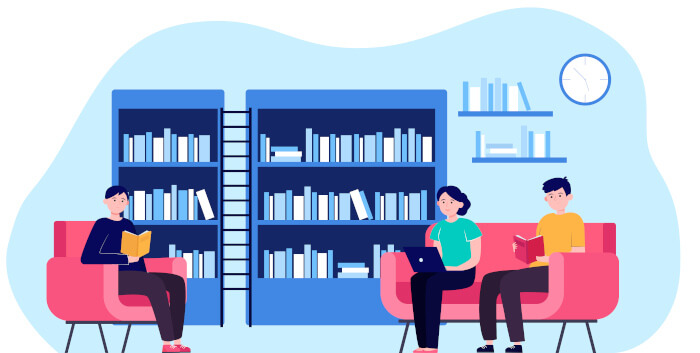6. Supporting Python 3 by Lennart Regebro
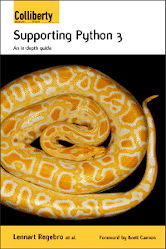 Supporting Python 3 is an expertly written in-depth book which guides the reader through the process of adding Python 3 support, from choosing a strategy to solving distribution issues.
Supporting Python 3 is an expertly written in-depth book which guides the reader through the process of adding Python 3 support, from choosing a strategy to solving distribution issues.
The process of switching to Python 3 is most often called “porting”. The first two editions of this book were also called “Porting to Python 3”. However, this gave the false impression that this was a lot of work, and that Python 3 was “a different language” than Python 2. Although moving to Python 3 can be hard work, for the most time it is not, and as Python 2.5 and Python 3.2 are rapidly falling out of use, it gets even easier.
If you want to ‘port’ Python 2 code to Python 3, read this book.
The author has been using Python since 2008.
This book is licensed under a Creative Commons Attribution-NonCommercial-ShareAlike 3.0 Unported License.
7. Building Skills in Python by Steven F. Lott
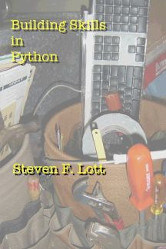 Building Skills in Python is a 42 chapter book which helps build Python programming skills through a series of exercises. It includes useful projects from straightforward to sophisticated that will help solidify your Python skills.
Building Skills in Python is a 42 chapter book which helps build Python programming skills through a series of exercises. It includes useful projects from straightforward to sophisticated that will help solidify your Python skills.
This book is a close-to-complete presentation of the Python language, updated to cover Python 2.6 and some elements of Python 3.1. It’s oriented toward learning, which involves accumulating many closely intertwined concepts. This book is primarily targeted at professional programmers.
The first three parts are organized in a way that builds up the language in layers from central concepts to more advanced features. Programming exercises are provided to encourage further exploration of each layer. The last two parts cover the extension modules and provide specifications for some complex exercises that will help solidify programming skills.
The book explores a wide range of topics including:
- Numeric Expressions and Output.
- Advanced Expressions.
- Variables, Assignment and Input.
- Truth, Comparison and Conditional Processing.
- Loops and Iterative Processing.
- Functions.
This book is made available under a Creative Commons Attribution-Noncommercial-No Derivative Works License.
8. Think Complexity by Allen B. Downey
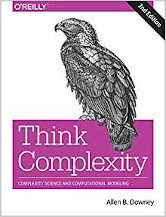 Think Complexity is about data structures and algorithms, intermediate programming in Python, computational modeling and the philosophy of science.
Think Complexity is about data structures and algorithms, intermediate programming in Python, computational modeling and the philosophy of science.
After reading the material, you’ll use graphs, cellular automata, and agent-based models to study topics in physics, biology, and economics.
Whether you’re an intermediate-level Python programmer or a student of computational modeling, you’ll delve into examples of complex systems through a series of worked examples, exercises, case studies, and easy-to-understand explanations.
Topics covered include:
- Graphs including random and connected graphs.
- Analysis of algorithms – the branch of computer science that considers the performance of algorithms.
- Small world graphs.
- Scale-free networks: Zipf’s law, cumulative, continuous and Pareto distributions.
- Cellular automata.
- Game of Life.
- Fractals.
- Self-organized criticality.
- Case studies.
Permission is granted to copy, distribute, transmit and adapt this work under a Creative Commons Attribution-NonCommercial-ShareAlike 4.0 International License.
9. Programming Computer Vision with Python by Jan Erik Solem
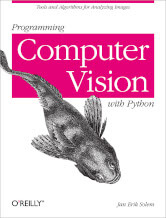 Programming Computer Vision with Python gives a hands-on introduction to the underlying theory and algorithms of computer vision (images, videos, etc).
Programming Computer Vision with Python gives a hands-on introduction to the underlying theory and algorithms of computer vision (images, videos, etc).
It seeks to explain computer vision in simple terms, without becoming too embroiled in theory. You learn techniques for object recognition, 3D reconstruction, stereo imaging, augmented reality, and other computer vision applications as you follow clear examples written in Python.
There are complete code samples with accompanying explanations.
The Python language comes with many powerful modules for handling images, mathematical computing and data mining.
Topics covered include:
- Learn techniques used in robot navigation, medical image analysis, and other computer vision applications.
- Work with image mappings and transforms, such as texture warping and panorama creation.
- Compute 3D reconstructions from several images of the same scene.
- Organize images based on similarity or content, using clustering methods.
- Build efficient image retrieval techniques to search for images based on visual content.
- Use algorithms to classify image content and recognize objects.
- Access the popular OpenCV library through a Python interface.
The final draft of the book is released under a Creative Commons license.
10. Annotated Algorithms in Python by Massimo Di Pierro
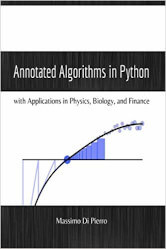 Annotated Algorithms in Python with Applications in Physics, Biology, and Finance is compiled from lectures given by the author over a period of 10 years at the School of Computing of DePaul University.
Annotated Algorithms in Python with Applications in Physics, Biology, and Finance is compiled from lectures given by the author over a period of 10 years at the School of Computing of DePaul University.
The lectures cover multiple classes, including Analysis and Design of Algorithms, Scientific Computing, Monte Carlo Simulations, and Parallel Algorithms. These lectures teach the core knowledge required by any scientist interested in numerical algorithms and by students interested in computational finance.
The book is published under the Creative Commons Attribution-NonCommercial-NoDerivs 3.0 Unported License.
Next page: Page 3 – Invent Your Own Computer Games with Python and more books
Pages in this article:
Page 1 – Think Python and more books
Page 2 – Supporting Python 3 and more books
Page 3 – Invent Your Own Computer Games with Python and more books
Page 4 – Making Games with Python & Pygame and more books
Page 5 – Hacking Secret Ciphers with Python and more books
Page 6 – Learn Python, Break Python and more books
Page 7 – Modeling Creativity: Case Studies in Python and more books
Page 8 – Python in Hydrology and more books
Page 9 – Tiny Python 3.6 Notebook and more books
All books in this series:
| Free Programming Books | |
|---|---|
| Ada | ALGOL-like programming language, extended from Pascal and other languages |
| Agda | Dependently typed functional language based on intuitionistic Type Theory |
| Arduino | Inexpensive, flexible, open source microcontroller platform |
| Assembly | As close to writing machine code without writing in pure hexadecimal |
| Awk | Versatile language designed for pattern scanning and processing language |
| Bash | Shell and command language; popular both as a shell and a scripting language |
| BASIC | Beginner’s All-purpose Symbolic Instruction Code |
| C | General-purpose, procedural, portable, high-level language |
| C++ | General-purpose, portable, free-form, multi-paradigm language |
| C# | Combines the power and flexibility of C++ with the simplicity of Visual Basic |
| Clojure | Dialect of the Lisp programming language |
| ClojureScript | Compiler for Clojure that targets JavaScript |
| COBOL | Common Business-Oriented Language |
| CoffeeScript | Transcompiles into JavaScript inspired by Ruby, Python and Haskell |
| Coq | Dependently typed language similar to Agda, Idris, F* and others |
| Crystal | General-purpose, concurrent, multi-paradigm, object-oriented language |
| CSS | CSS (Cascading Style Sheets) specifies a web page’s appearance |
| D | General-purpose systems programming language with a C-like syntax |
| Dart | Client-optimized language for fast apps on multiple platforms |
| Dylan | Multi-paradigm language supporting functional and object-oriented coding |
| ECMAScript | Best known as the language embedded in web browsers |
| Eiffel | Object-oriented language designed by Bertrand Meyer |
| Elixir | Relatively new functional language running on the Erlang virtual machine |
| Erlang | General-purpose, concurrent, declarative, functional language |
| F# | Uses functional, imperative, and object-oriented programming methods |
| Factor | Dynamic stack-based programming language |
| Forth | Imperative stack-based programming language |
| Fortran | The first high-level language, using the first compiler |
| Go | Compiled, statically typed programming language |
| Groovy | Powerful, optionally typed and dynamic language |
| Haskell | Standardized, general-purpose, polymorphically, statically typed language |
| HTML | HyperText Markup Language |
| Icon | Wide variety of features for processing and presenting symbolic data |
| J | Array programming language based primarily on APL |
| Java | General-purpose, concurrent, class-based, object-oriented, high-level language |
| JavaScript | Interpreted, prototype-based, scripting language |
| Julia | High-level, high-performance language for technical computing |
| Kotlin | More modern version of Java |
| LabVIEW | Designed to enable domain experts to build power systems quickly |
| LaTeX | Professional document preparation system and document markup language |
| Lisp | Unique features - excellent to study programming constructs |
| Logo | Dialect of Lisp that features interactivity, modularity, extensibility |
| Lua | Designed as an embeddable scripting language |
| Markdown | Plain text formatting syntax designed to be easy-to-read and easy-to-write |
| Objective-C | Object-oriented language that adds Smalltalk-style messaging to C |
| OCaml | The main implementation of the Caml language |
| Pascal | Imperative and procedural language designed in the late 1960s |
| Perl | High-level, general-purpose, interpreted, scripting, dynamic language |
| PHP | PHP has been at the helm of the web for many years |
| PostScript | Interpreted, stack-based and Turing complete language |
| Prolog | A general purpose, declarative, logic programming language |
| PureScript | Small strongly, statically typed language compiling to JavaScript |
| Python | General-purpose, structured, powerful language |
| QML | Hierarchical declarative language for user interface layout - JSON-like syntax |
| R | De facto standard among statisticians and data analysts |
| Racket | General-purpose, object-oriented, multi-paradigm, functional language |
| Raku | Member of the Perl family of programming languages |
| Ruby | General purpose, scripting, structured, flexible, fully object-oriented language |
| Rust | Ideal for systems, embedded, and other performance critical code |
| Scala | Modern, object-functional, multi-paradigm, Java-based language |
| Scheme | A general-purpose, functional language descended from Lisp and Algol |
| Scratch | Visual programming language designed for 8-16 year-old children |
| SQL | Access and manipulate data held in a relational database management system |
| Standard ML | General-purpose functional language characterized as "Lisp with types" |
| Swift | Powerful and intuitive general-purpose programming language |
| Tcl | Dynamic language based on concepts of Lisp, C, and Unix shells |
| TeX | Markup and programming language - create professional quality typeset text |
| TypeScript | Strict syntactical superset of JavaScript adding optional static typing |
| Vala | Object-oriented language, syntactically similar to C# |
| VHDL | Hardware description language used in electronic design automation |
| VimL | Powerful scripting language of the Vim editor |
| XML | Rules for defining semantic tags describing structure ad meaning |
